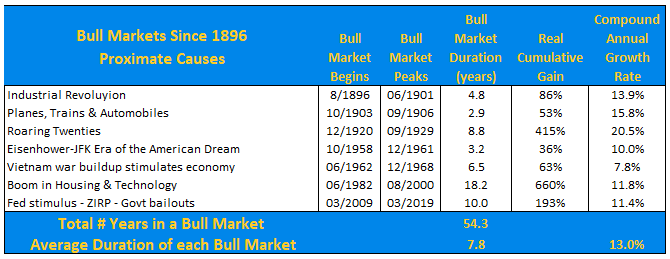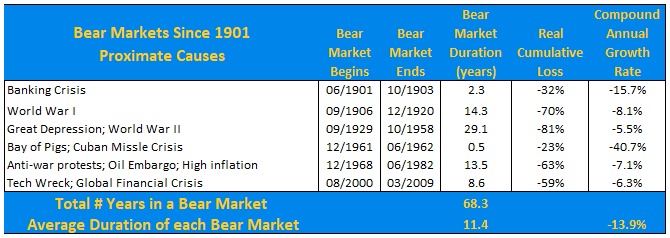Conventional Wisdom Says That Buy & Hold Is The Best Investment Strategy For You
But is it? How does the conventional wisdom know what's the best approach for you? If you consider yourself a buy & hold investor, let me ask you this. Has Buy & Hold delivered the results you need? If not, maybe it would be a good idea to consider a few alternatives. That's what this article is all about.
What exactly is buy & hold?
There is no Blue Ribbon Panel of experts who define what buy & hold is. We have one of those for defining what an economic recession is, and what a hurricane is. But the job of defining what buy & hold means is largely left to financial advisers, academics, and pundits.
I'm as qualified as anyone to define what buy & hold is, by virtue of my 30 years as a professional trader, portfolio manager, and serious student of the market and investment theory. Here's my definition of buy & hold.
Buy & hold is a doctrine that is promoted by the investment industry as a sort of holy grail of investment approaches. Even Warren Buffett preaches the gospel of buy & hold. And Jack Bogle, the inventor of the index fund, was a relentless advocate of buy & hold. There is a large subculture of Bogle fans who call themselves "Bogleheads." and they are true believers in the cause. (Check out their website here.)
The cult of Evidence-Based Investing
A few years ago, the professional buy & hold advocates latched on to a new buzz word: Evidence Based Investing. Essentially it posits that active investing (picking stocks, timing your entry and exit points, following trends, etc.) is a dumb idea, and by extension you are a dumb investor if you partake in these silly activities. Well, how rude!
These sanctimonious crusaders for passive investing (buying a collection of diversified index funds and holding them forever) are really just promoting buy & hold, but with the added twist of using low cost mutual funds and ETFs that track market indexes.
To be honest, I like the idea of low-cost, diversified index funds as a way for many investors to construct their portfolios. It makes good common sense. What I don't like is the implied commitment to buy & hold that goes along with passive index investing.
The downside of passive, buy & hold, evidence-based investing
I can summarize the downside with two words... Bear Markets. When you sign up for the passive buy & hold approach you are agreeing to stay fully invested in the stock market through thick and thin. I'm here to tell you that staying fully invested through the thin part is not a smart idea.
The buy & hold promoters will tell you that it's impossible to predict when the next bear market is coming, so just stay fully invested and ride out the storm because the market always recovers eventually. That's true. But here's the $64,000 question: How many times do you want to earn the same dollar on your investments?
When the market is in decline, you are not earning anything on your investments. In fact, you are going backwards, essentially giving back the wealth you have already earned, with the assumption that one day your nest egg will get back to where it was before. Does that sound like a good idea to you?
Bear Markets - the Bane of Every Investor
Below I have two tables that show the long arc of history in the stock market. The first table shows the gains investors have enjoyed (in theory, at least) if they were invested from start to finish. The second table shows the losses investors have suffered (again, in theory) if they remained invested because of their commitment to ride out the storms, as the buy & hold advocates recommend.
After you review these tables, I want you to ask yourself this question: Do you really believe that you would sit still and suffer the punishment that these bear markets have visited on buy & hold adherents? I have advised thousands of investors, and I estimate that only about 20% of self-described buy & hold types were able to stay invested in 2000-2002, or 2008-2009. At some point, emotion takes over and all plans are abandoned. Self-preservation is a powerful motivator, and few investors have the stomach to sit there and take a 50% hit to their nest egg.
Table 1. The greatest bull markets in history
I could have named the above table "Let The Good Times Roll" because each of these time periods were a great time to be invested in the stock market.
In the 122 years that this tables cover, 54 years were spent in bull market mode. That's 45% of the 122 years. If you happened to catch one or more of these magnificent bull markets, good for you. This is what every investor hopes for.
The average duration of these bull markets was 7.8 years. Think about that. For almost 8 years your account is going up and up and up. It begins to feel like the market will never go down again. But we all know it will.
The average yearly gain for these bull markets is 13%. Per year! Who wouldn't like that? If you were lucky enough to be an investor during the Roaring Twenties, you made more than 20% per year for nearly 9 years. That's astounding, and it helps explain why those folks were so happy, dancing in the speakeasys with campaign glasses in their hands.
But don't forget, the market can go the other way too.
Table 2. The worst bear markets in history
The next table shows the flip side of those magnificent bull markets. These are the longest, nastiest, and most painful periods in stock market history. If you have experienced even one of them, you know what I mean when I say that buy & hold is not necessarily the best approach for all investors.
The above table identifies the worst times to be invested in the stock market. In the 122 years that these tables cover, 68 were spent in bear market mode. That's 56% of the 122 years in the study. If you were unfortunate enough to be invested during one or more of these market periods, my condolences. I suspect that you probably threw in the towel before your account declined by 30% or more.
These super-bears lasted, on average, more than 11 years. During those 11 years, investors saw the value of their life savings decline by nearly 14% every year. That's true financial pain, wouldn't you agree. So the question I have is this. Why should an investor voluntarily subject him or herself to that much pain? In truth, most buy & holders don't have the stomach for this, and they bail out after suffering major damage. Then they struggle with the decision to get back in. But that's a story for another article.
The market always recovers, so what's the big deal?
The big deal is TIME. We all have a finite number of years to invest and accumulate a nest egg that will sustain us in our twilight years. Why in the world would you be willing to sit through an 11 year period where your nest egg was evaporating by 14% per year? To me, this is crazy.
The advocates of buy & hold will say that nobody can possibly know when these super-bears are coming, and when they are about to end. Really? I respectfully differ with that assertion.
What is true is that nobody can pick the tops and bottoms of bear markets. But that doesn't mean you should just sit there and take the pain. My methodology is to assess the risk in the market each month, and adjust my equity exposure accordingly. This is not market timing, it's risk management.
If I can avoid just half of the damage from a super-bear, my long term returns will increase by 2% per year at minimum, and as much as 5% per year. If you don't think that's a big deal, you're mistaken. This pickup in long term returns will amount to an extra 50% to 100% in your nest egg when you are ready to tap into it.
There is another way to approach the challenge of investing
In the next installment of this series I will propose a few alternatives to the buy & hold approach. You don't have to stray too far off the beaten path in order to benefit from the ideas I will propose. But you do need to keep an open mind about it.



The other fallacy is that you cannot tell when the market will turn down or go flat.
When profits turn down the market turns down. Any one of a number of factors will turn profits down. They are easy to identify and well known such as inflation and rising interest rates, over production, high debt levels, bubbles, fed tightening, recessions in trading partners etc…
Also easy to identify when profits and market will turn up. Expansion fiscal and monetary activity, new invention, reduced tax rates etc, expansion in trading partners, etc..
If you cannot identify or understand the factors that make markets rise and fall then buy bonds returning 5 to 6 % and let compound interest take care of the rest.